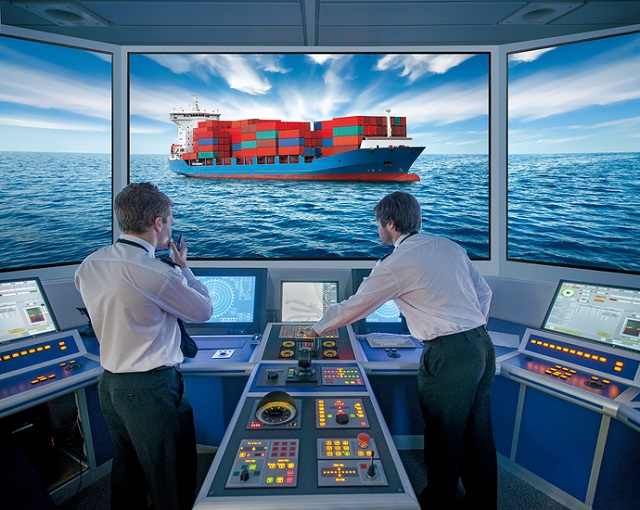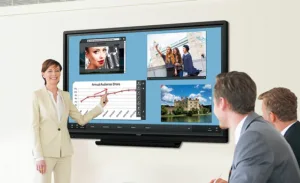Another large-format display from Sharp is the PN-H801: an 80″ unit with UltraHD resolution that focuses on colour reproduction. The company claims an sRGB colour gamut approximately 20% larger than that on the PN-E802.
 Michael Bailly, director of product planning and marketing at Sharp, explained that the wide colour gamut of the display is based on “a specific LED design”. There is also work going on within Sharp (although not in the Visual Solutions division) into new types of colour-combined LEDs that can be used in backlights to expand the intrinsic gamut of a display – although this solution was not used in this particular case.
Michael Bailly, director of product planning and marketing at Sharp, explained that the wide colour gamut of the display is based on “a specific LED design”. There is also work going on within Sharp (although not in the Visual Solutions division) into new types of colour-combined LEDs that can be used in backlights to expand the intrinsic gamut of a display – although this solution was not used in this particular case.
Landscape or portrait orientation can be used for installation of the PN-H801, which is also capable of 24/7 operation. The display will show 10-bit colour.
Like the PN-70TW3, the 80″ unit uses a VA panel. This has 176° viewing angles, a 4,000:1 contrast ratio and 6ms (G2G) response time. A direct-LED backlight is installed, providing the screen with 440 cd/m² of brightness.
MHL-HDMI 2.0, HDMI 1.4 (x3), mini-VGA, RS232 and USB (with USB media player) ports are featured, as well as two 10W speakers.
The PN-H801 is available in Europe now.
Analyst Comment
LEDs are “the proper way” to achieve wide colour gamuts on signage displays for now, Bailly said to us. Solutions like quantum dots come with environmental issues, and “their wear rate is also unclear”.
There is still a large gap in the acceptable premiums between a high-end graphics desktop monitor, which might use GBR LEDs, and price-sensitive LFDs for signage. “It is really about finding the right balance”, Bailly noted.
Bailly also told us about a total colour accuracy solution that will soon be available for the PN-H801. This will take the form of a slim, purpose-built box on the rear of the unit (which we mentioned in our ISE report), with a graphics card focused on colour calibration (it will feature two outputs supporting UltraHD, with separate lookup tables) and L*ab calibration software from Germany’s BasicColor. The intent is to offer both extended and very accurate colours to retailers who need it, such as jewellers and fashion outlets. (TA)

